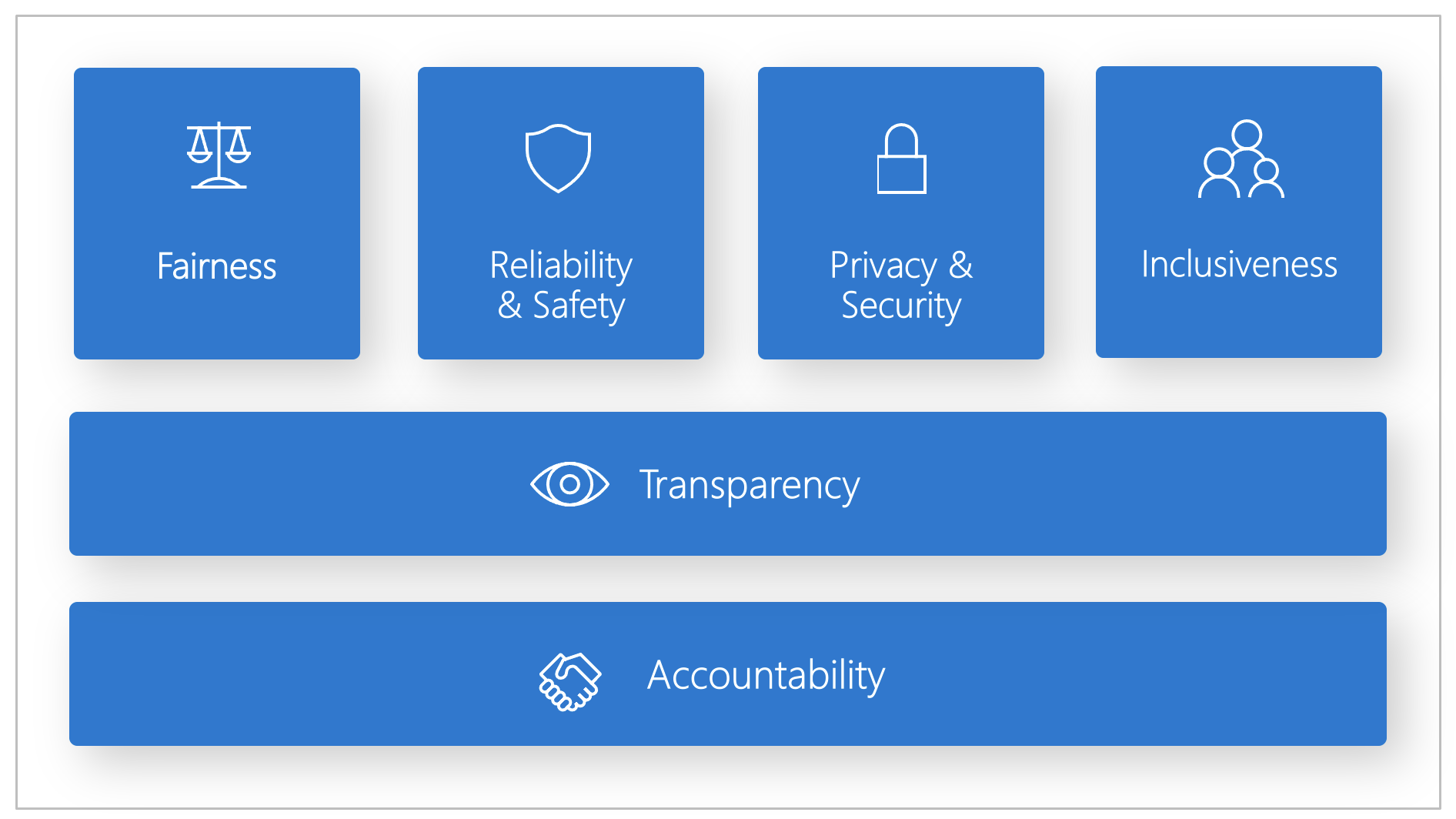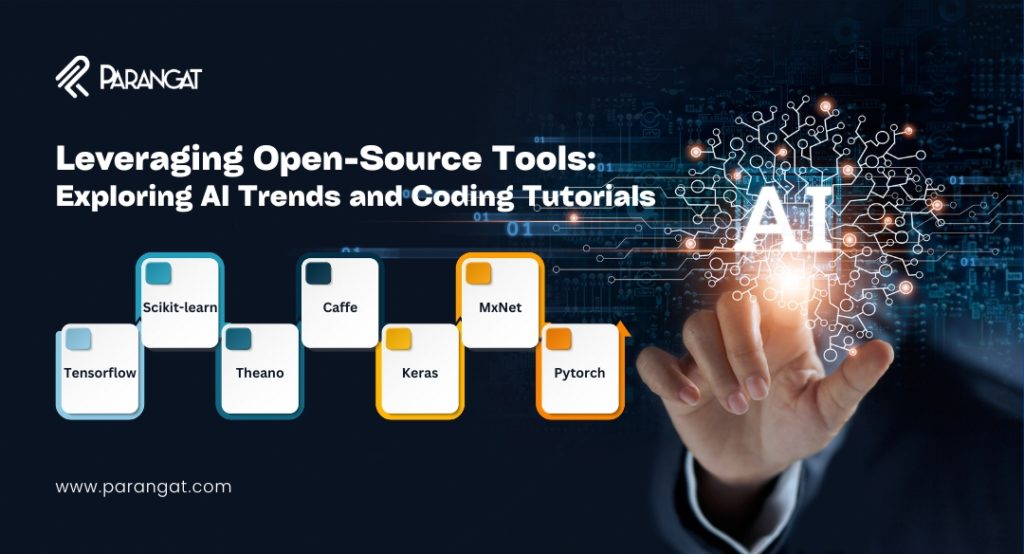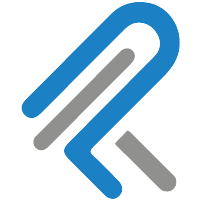The demand for innovative AI solutions has never been more pressing, considering recent technological innovations. Open-source tools have emerged as a crucial answer to this necessity, enabling the exploration of artificial intelligence trends and coding tutorials. The global Open Source Services market is predicted to grow significantly, from USD 25.6 billion in 2022 to USD 54.1 billion by 2027, with an impressive CAGR of 16.2%. This growth reflects the increasing importance of open-source platforms in the technological sector.
This immense influence is not a surprise, considering that open-source tools foster collaboration and knowledge sharing. They also facilitate experimentation and continuous improvement, making them essential for AI enthusiasts and developers. Therefore, this article will comprehensively discuss the principles and benefits of open source. It will also delve into some of the top AI platforms and tools available today.
What Do You Mean By Open Source?
Open source means the software’s code is open and available for everyone to see and use. It is like sharing a recipe with others so they can cook the same dish. Anyone can use, modify, and share the open-source code freely. This openness encourages collaboration and creativity among developers, making technology accessible to all. Thus, open-source software often comes at no cost.
What Are The Principles Of Open Source?
Some of the principles of open-source code that form the foundation of a collaborative and inclusive software development ecosystem are as follows:

1. Source Code Access
Open source provides access to the software’s source code. It is like having the blueprint of a house. You can study, modify, and improve these codes per your needs. Such a level of transparency not only encourages innovation but also helps in identifying and fixing potential issues. This further leads to more robust and reliable software.
2. Derivative Works
Open source permits users to create new projects based on existing ones. It is much like building new structures using Lego bricks. This principle of open-source fosters creativity and collaboration. It also encourages sharing and allows the community’s collective knowledge to flourish.
3. Transparency and Trust
Open source promotes a culture of transparency and trust in the software community. It allows you to verify the software’s behavior and ensure it meets your specific requirements by providing access to the source code. This transparency builds confidence in the software’s security and functionality, as no hidden or secretive components exist.
Learn More: AI V/S Human Intelligence
How Does Open Source Work?
Open source works through collaboration and sharing. When developers create software, they make its source code available to everyone. This code acts as a set of instructions that tell the computer what to do. Others can then access and use the code. This allows them to fix bugs and add new features. These changes are often shared with the community, further benefiting everyone. Open-source development platforms make it easy for developers to collaborate and create a large talent pool to improve the software continuously. This collaborative effort leads to more secure and innovative software for everyone.
What Are The Benefits Of Open Source?
Some of the benefits of open-source software that make it a preferred choice for individuals and organizations are as follows:
1. Flexibility and Customization
Open source allows you to access the source code, which acts as a blueprint for the software. This empowers you to modify and tailor the software to your specific requirements, ensuring a perfect fit for your needs.
2. Security and Reliability
Open-source projects undergo continuous scrutiny due to their extensive community of contributors. This collective effort promptly identifies and resolves vulnerabilities, enhancing security and reliability. As a result, open-source software often proves to be more secure than its proprietary counterparts.
4. Rapid Development
Open-source projects are developed collaboratively, leading to faster updates and feature enhancements. As a result, open-source software evolves rapidly, keeping pace with the latest advancements and user demands.
5. Avoiding Vendor Lock-In
Proprietary software often ties users to a specific vendor, making it challenging to switch to alternative solutions. Open source mitigates this risk by allowing you to choose from various compatible solutions. This flexibility empowers users to make informed decisions without being locked into a vendor’s ecosystem.
Top 7 AI Platforms And Tools
There are numerous AI tools and platforms available today, but the best ones out of them are:
1. Tensorflow
TensorFlow is an open-source, high-performance machine learning library developed by the Google Brain team. It is designed to simplify the process of building and deploying machine learning models. This tool supports various tasks, from simple linear regression to complex deep-learning projects. Its scalability and ease of use have made it one of the most popular frameworks in the AI community.
Features
- It extensively supports various machine learning tasks, including classification and natural language processing (NLP).
- It supports deep learning models like Convolutional Neural Networks (CNNs) and Recurrent Neural Networks (RNNs).
- It allows you to scale your models from running on a single CPU to distributed systems with multiple GPUs or TPUs.
- It provides various deployment options like TensorFlow Serving, TensorFlow Lite, and TensorFlow.js for various models.
Best For
TensorFlow is best for researchers and developers looking to implement machine learning and deep learning models efficiently.

2. Scikit-learn
Scikit-learn is a popular open-source ML library built on SciPy and Matplotlib. It is designed to provide efficient tools for data mining and data analysis. It is written in programming languages like Python and offers various algorithms for ML tasks. This makes Scikit-learn a go-to choice for beginners and experienced data scientists alike.
Features
- It offers supervised and unsupervised machine-learning methods.
- It provides a consistent and easy-to-use API.
- It integrates with other Python libraries like Pandas and NumPy.
- It aids in optimizing models and improving their performance.
Best For
Scikit-learn is best for developers and data scientists who want to quickly implement machine learning algorithms and perform data analysis using Python.
3. Theano
Theano was an open-source numerical computation library primarily developed by the Montreal Institute for Learning Algorithms (MILA) at the University of Montreal. It allows you to optimize and evaluate mathematical expressions involving multi-dimensional arrays.
Features
- It lets you define mathematical expressions symbolically, similar to writing mathematical equations on paper.
- It offers seamless integration with GPUs, allowing users to perform computations on graphics cards.
- It is highly flexible, allowing you to optimize custom operations for efficient computation.
- It optimizes numerical computations by performing advanced algebraic optimizations and using sophisticated memory management techniques.
Best For
Theano is best for users in the field of deep learning who want to experiment with novel architectures and perform efficient computations, especially on GPUs.
Read More: Edge AI Unleashed: A Comprehensive Guide To Features And Challenges
4. Caffe
Caffe is an open-source deep-learning framework developed by the Berkeley Vision and Learning Center (BVLC). It is designed for expressive architectures and fast computation. This makes it ideal for research, industry deployment, and learning in large-scale projects. Caffe has gained popularity for its efficiency in training and deploying convolutional neural networks (CNNs) for computer vision tasks.
Features
- It is known for its modular architecture, allowing users to experiment with different deep learning models easily.
- It efficiently belts the power of GPUs to accelerate neural network computations.
- It provides a model zoo with pre-trained models, including popular architectures like AlexNet and ResNet.
- It enables the seamless deployment of trained models to production systems or embedded devices.
Best For
Caffe is best for computer vision tasks, mainly when working with CNNs.
5. Keras
Keras is an open-source deep-learning library written in Python. Initially developed by François Chollet, it is now part of the TensorFlow project as its official high-level API. It is designed to be user-friendly, modular, and extensible, providing a simple interface for building and training deep learning models.
Features
- It offers an intuitive and user-friendly API that simplifies the process of building and training deep learning models.
- It follows a modular design, enabling users to construct complex neural network architectures by stacking and connecting various layers.
- It supports multiple backend engines, including TensorFlow and Microsoft Cognitive Toolkit (CNTK).
- It provides convenient built-in preprocessing utilities for data preparation, including image data augmentation and one-hot encoding.
Best For
Keras is best for data scientists who want to prototype and experiment with deep learning models quickly.
6. MxNet
MxNet (pronounced as “M-Ex-Net”) is an open-source deep learning framework developed by Apache Software Foundation. It is designed to provide efficient and scalable solutions for training and deploying deep neural networks. It supports multiple programming languages, including Python, C++, and Julia. This makes MxNet an accessible and versatile option for a wide range of users.
Features
- It has efficient distributed computing capabilities, enabling it to scale seamlessly across multiple GPUs and machines.
- It supports both imperative and symbolic programming models.
- It has optimized kernel implementations and support for mixed precision training, contributing to its high-performance capabilities.
- It supports multiple data types and formats, making it a comprehensive toolkit for building diverse deep-learning models.
Best For
MxNet is best for data scientists and developers who require a scalable and efficient deep-learning framework.
7. Pytorch
PyTorch is an open-source deep learning framework developed by Facebook’s AI Research Lab (FAIR). It is designed to provide a flexible and dynamic computational graph, making it easy to build and train deep learning models. PyTorch’s dynamic nature also enables users to debug and experiment interactively.
Features
- It adopts a dynamic computational graph, allowing users to define and modify models on-the-fly.
- It has an autograd system that automatically computes gradients for tensor operations, simplifying the process of calculating derivatives during model training.
- It allows users to evaluate operations immediately as they are defined.
- It supports GPU acceleration, allowing users to train deep learning models efficiently on compatible hardware.
Best For
PyTorch is best for researchers, data scientists, and machine learning enthusiasts who value flexibility and dynamic graph capabilities.
How Can You Leverage Open Source Tools For AI Trends?
Leveraging open-source tools for artificial intelligence trends opens up a world of possibilities for developers and AI enthusiasts. This includes:
1. Experimentation and Research
Open-source AI platforms serve as a safe playground for developers to experiment with new algorithms and ideas. They can test different models and explore techniques to find the most effective solutions for their use cases. This freedom to experiment accelerates innovation and drives the development of cutting-edge AI applications.
2. Rapid Prototyping
Open-source tools provide ready-to-use solutions that enable rapid prototyping of AI applications. These tools come with pre-built functionalities and libraries, which saves time and effort. Thus, you can focus on refining your ideas and building prototypes without starting from scratch. This rapid prototyping process facilitates faster development cycles and enables more efficient testing.
3. Community Collaboration
Engaging with the open-source community has various collaboration opportunities. You can share your projects and ideas with diverse experts and enthusiasts. This collaboration encourages knowledge exchange and peer reviews. Furthermore, the feedback and suggestions received from the community enhance the quality and robustness of AI projects.
4. Staying Updated With AI Trends
Open-source AI projects are often at the forefront of AI advancements. You can stay up-to-date with the latest trends and research breakthroughs by following and contributing to these projects.
5. Continuous Improvement
Open-source tools thrive on the contributions of a vast community of developers. This collective effort ensures continuous improvement of the software. As developers optimize algorithms and add new features, the tools become more powerful and reliable. This constant refinement benefits all users of the open-source AI ecosystem.
Explore More About: Super AI: Understanding The Definition, Threats, and Trends
Exploring The Potential Of Open Source
Open-source tools have emerged as a game-changer, balancing AI technology. Moreover, embracing open source reduces barriers to entry and fosters innovation and learning opportunities. Therefore, consider leveraging the power of open source as you explore AI trends and coding tutorials to advance your projects. In case you’re looking for an effective open-source software development platform. Then, consider reaching out to Parangat Technologies. They are home to some of the most skilled engineers for the job. Moreover, they also specialize in a comprehensive range of solutions related to mobile apps, AI, etc.

With roll up sleeves, dive in and get the job done approach, it was in the year 2010 when Sahil started Parangat Technologies. Emphasizing a healthy work culture and technology-driven company, he has successfully created a workplace where people love to work and live. He is a software engineer and a passionate blockchain enthusiast.


 +44-7511-112566
+44-7511-112566 +353-1-8079571
+353-1-8079571 +1-415-799-9792
+1-415-799-9792

